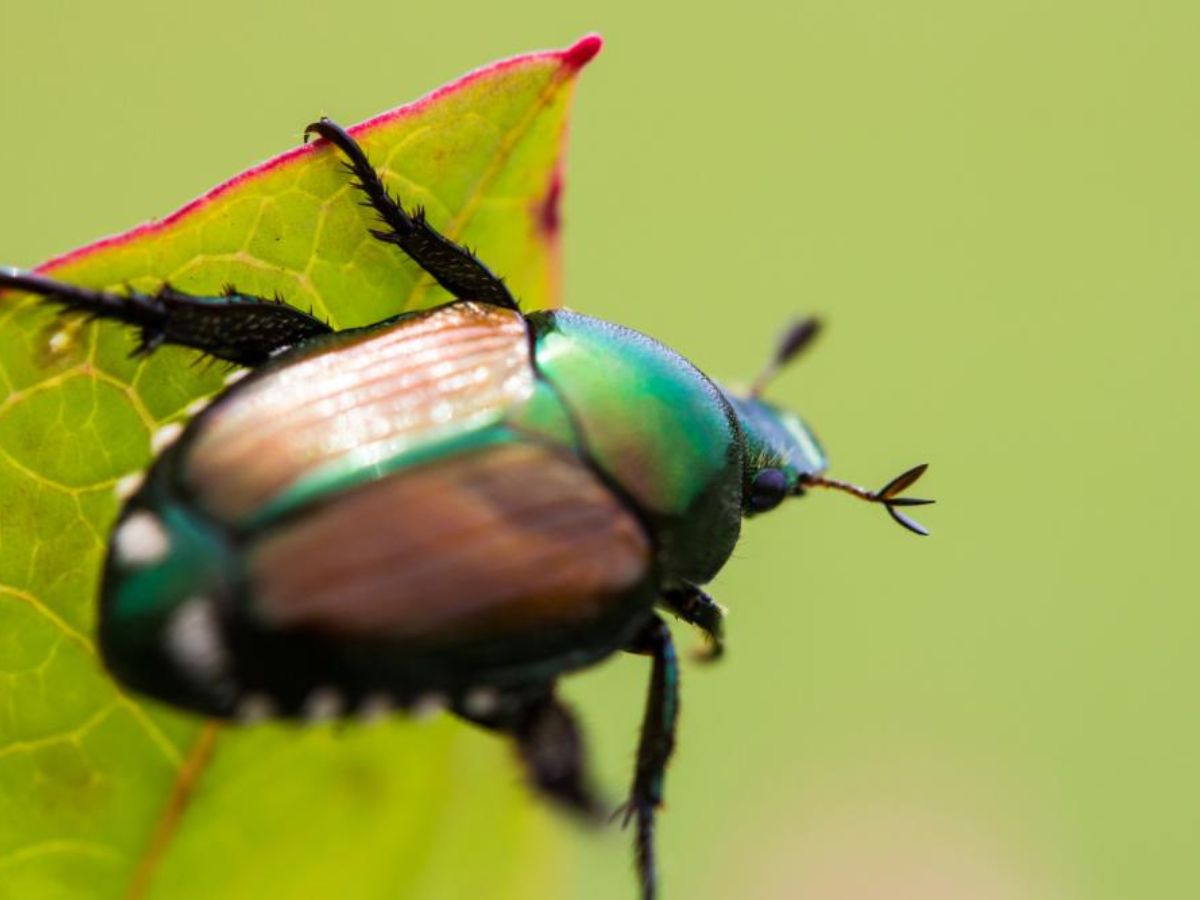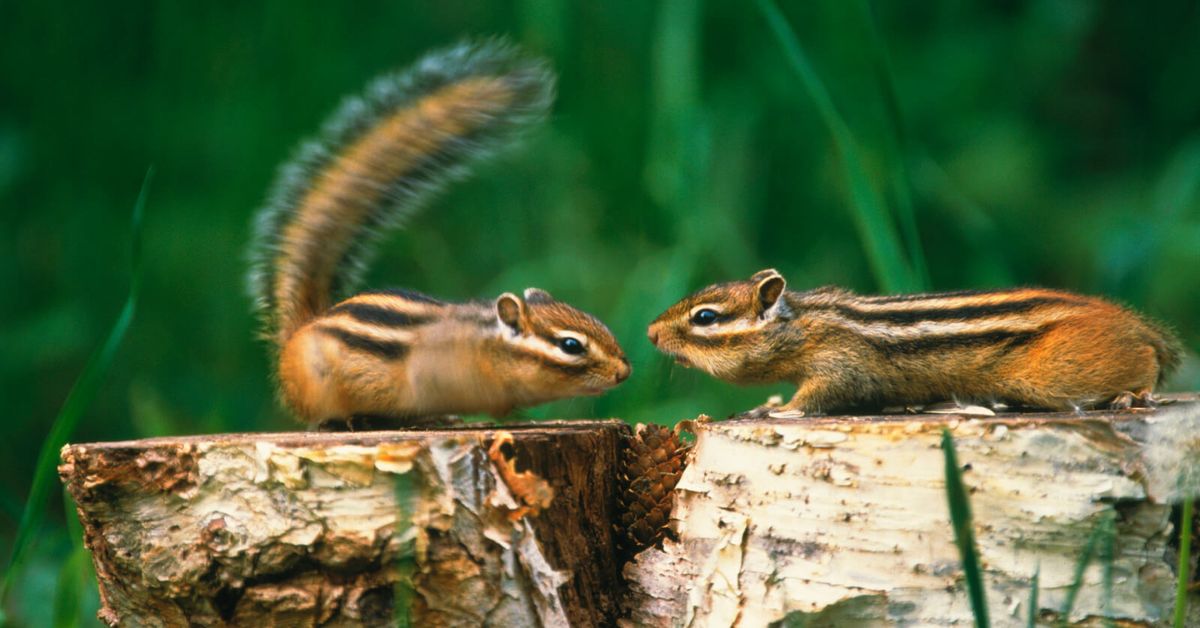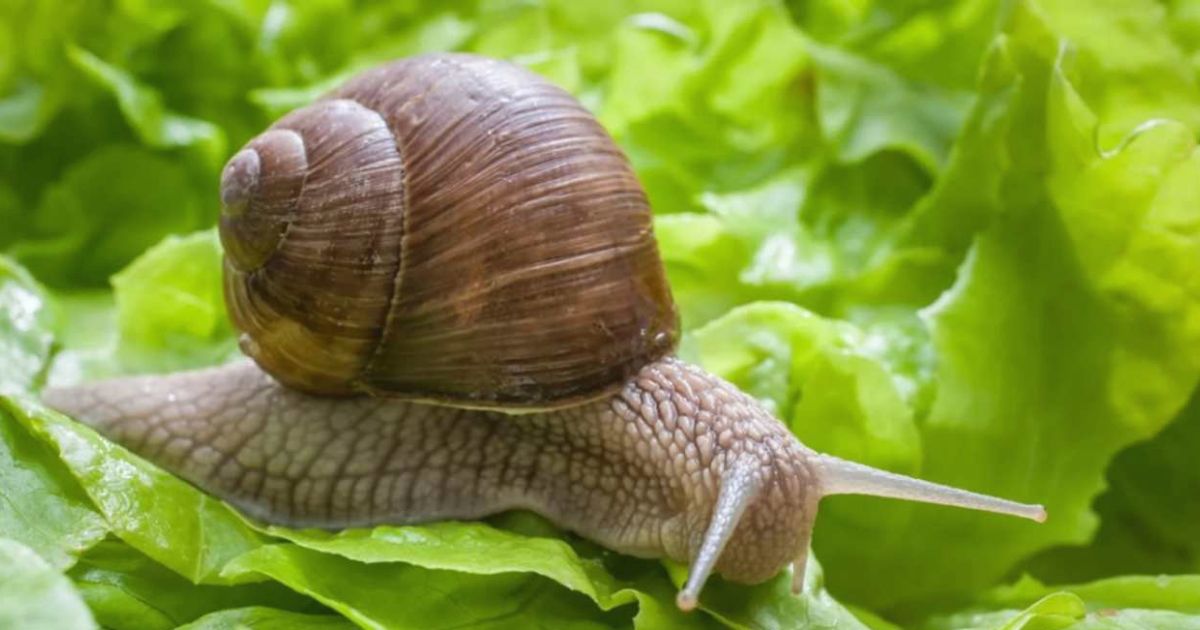Defending your garden from the voracious appetite of Japanese beetles requires strategic precision and unwavering determination. These metallic-hued invaders, with their insatiable appetite for foliage, can wreak havoc on your beloved plants if left unchecked. However, armed with knowledge and effective techniques, you can reclaim your garden oasis and thwart the onslaught of these persistent pests. Let’s delve into the art of combating Japanese beetles and reclaim the tranquility of your green haven.
What are Japanese Beetles?
Kill Japanese beetles or Popillia japonica, are an invasive pest that originated in Japan and is now a major annoyance throughout most of the United States. About half an inch long, these metallic-green beetles are easily identified by their unique coppery wings and iridescent body. Both adult and dead are a threat to crops used for agriculture as well as decorative plants since they feed on a diverse range of plants.
There are four phases in the life cycle of an organism: the egg, larva, pupa, and adult. In early summer, usually around June, adult beetles emerge and begin to feed on leaves, flowers, and fruits. Plants that are severely damaged by their feeding activities may become skeletonized and more susceptible to disease. The grubs that emerge from the eggs laid by female beetles in the soil feed on grass roots and can be harmful to garden plants and lawns.
Acknowledging the best thing to kill Japanese beetles damage is essential for prompt action since, if left untreated, these pests can quickly kill the foliage. Both chemical and organic management techniques, such as employing pesticides and traps as well as introducing natural predators, are effective. To effectively apply targeted control measures and maintain the health of plants in impacted areas, it is essential to comprehend the biology and behavior.
Identifying Japanese Beetles
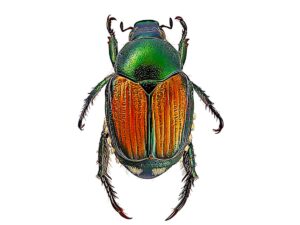
Identifying (Popillia japonica) is essential for gardeners and farmers aiming to mitigate the potential damage caused by these invasive pests. Adult beetles are easily recognizable by their distinct appearance, measuring around half an inch in length. Their metallic-green bodies, coupled with coppery-brown wing covers, create a striking contrast. An unmistakable characteristic is the presence of tufts of white hair along each side of the abdomen, forming a unique pattern that distinguishes them from other insects.
Observing feeding behavior is another key to identification. They congregate in groups, feeding voraciously on leaves, flowers, and fruits. This feeding activity leads to the characteristic skeletonization of leaves, a visible sign of their presence. Timing is crucial, as we are most active during the summer months, typically emerging in June.
Understanding the life cycle provides additional clues. Undergo complete metamorphosis, progressing through egg, larva (grub), pupa, and adult stages. Familiarity with this life cycle aids in predicting their presence at different times of the year.
By combining visual characteristics, feeding behavior, and seasonal activity, individuals can confidently identify Japanese beetles, allowing for prompt and targeted control measures to protect plants and landscapes from potential harm.
Signs of Japanese Beetle Damage
Recognizing the signs of damage is crucial for maintaining the health of plants and implementing timely interventions. Here are key indicators to look for:
- Skeletonized Leaves: One of the most distinctive signs of infestation is the skeletonization of leaves. Adult beetles feed on the tissue between the veins, leaving behind a lacy, skeleton-like appearance. This damage can weaken plants and make them more susceptible to disease.
- Irregular Feeding Patterns: voracious feeders tend to cluster on plants, leading to irregular patterns of damage. They often target the upper portions of plants, including flowers and the outer edges of leaves.
- Fruit and Flower Damage: Beetles do not limit their feeding to leaves alone; they also target flowers and fruits. Look for signs of partially eaten or damaged flowers and fruits, which can impact the plant’s reproductive capacity.
- Feeding Aggregation: Social feeders and their presence is often noticeable due to the aggregation of individuals on plants. Monitoring for clusters of beetles can help identify an infestation early.
- Grub Damage: While the damage caused by adult beetles is most visible, the larvae (grubs) also contribute to plant stress. Grubs feed on grassroots, which can lead to wilting, browning, or dead patches in lawns and gardens.
Being vigilant for these signs enables gardeners to detect infestations promptly. Early detection enables efficient control measures to be put in place to lessen damage and safeguard the general health of the afflicted area’s plant life.
Organic Control Methods

Implementing organic control methods for an eco-friendly approach that minimizes the use of synthetic chemicals. Here are effective strategies for controlling and kill Japanese beetles organically:
1. Neem Oil:
- Neem oil, derived from the neem tree, serves as a natural insecticide. It disrupts the feeding and reproductive cycles without harming beneficial insects.
- Mix neem oil with water according to the instructions and spray it on affected plants.
2. Beneficial Nematodes:
- Introduce beneficial nematodes to the soil. These microscopic organisms actively seek out and feed on larvae (grubs), disrupting their life cycle.
- Apply nematodes to the soil in late summer or early fall for optimal control.
3. Milky Spore Disease:
- Milky spore (Bacillus popilliae) is a bacterial disease that specifically targets grubs. Once applied to the soil, it spreads and remains active for years.
- Apply milky spore powder to the lawn according to package instructions.
4. Companion Planting:
- Planting or repellent plants alongside susceptible ones can help deter these pests. Plants like garlic, chives, and catnip are known to repel.
- Consider creating diverse plant communities to disrupt the attractiveness of the area to these, what kills Japanese beetles instantly.
5. Kaolin Clay (Surround):
- Kaolin clay forms a protective barrier on plant surfaces, making them less appealing. It doesn’t harm the beetles but makes feeding and mating less likely.
- Mix kaolin clay with water and spray it on plants, ensuring thorough coverage.
6. Handpicking:
- Physically removing by hand is a labor-intensive but effective method, especially for smaller infestations.
- To keep the beetles from coming back, submerge them in a pail of soapy water.
7. Floating Row Covers:
- Use lightweight, breathable fabric covers to physically protect plants from adult beetles. These covers allow sunlight and rain to reach plants while preventing beetle access.
Organic control methods offer sustainable alternatives for the best thing to kill Japanese beetles, managing and promoting a healthy and balanced ecosystem in your garden or lawn. Integrating a combination of these methods can enhance their effectiveness.
Chemical Control Options
When facing a Japanese beetle (Popillia japonica) infestation, chemical control options can provide an effective means of reducing their numbers. Here are several chemical control methods to consider:
1. Insecticidal Sprays:
- Pyrethroids, such as bifenthrin or permethrin, are commonly used and effective against adult beetles.
- Follow the manufacturer’s instructions regarding application rates and timing.
2. Systemic Insecticides:
- Use systemic pesticides, which the plant absorbs, and the feeding beetles consume. Imidacloprid is a common systemic insecticide used for Japanese beetle control.
- These insecticides are often applied to the soil or directly to plants and provide longer-lasting protection.
3. Diatomaceous Earth:
- Diatomaceous earth is an abrasive material found in nature that destroys the exoskeleton and leads to death by dehydration.
- Dust-affected plants with diatomaceous earth, ensuring thorough coverage.
4. Spinosad-Based Products:
- Spinosad is a natural insecticide derived from bacteria. It is effective against and has a relatively low impact on beneficial insects.
- Apply spinosad-based products according to the recommended rates.
5. Neonicotinoids:
- Neonicotinoid insecticides, such as acetamiprid or thiamethoxam, are effective against.
- These insecticides can be applied as sprays, soil drenches, or granules.
6. Contact Insecticides:
- Contact insecticides, like carbaryl (Sevin), offer immediate control by killing beetles on contact.
- Use caution with contact insecticides, as they may also affect non-target insects.
7. Residual Insecticides:
- Apply residual insecticides to surfaces where they are likely to land or feed. These can provide longer-lasting control.
Before using any chemical control method, carefully read and follow the instructions on the product label. Consider the impact on beneficial insects and follow recommended safety precautions. It’s also advisable to rotate chemical treatments to reduce the risk of developing resistance in the beetle population. Integrating chemical control with other management strategies can enhance overall effectiveness.
Traps for Japanese Beetles
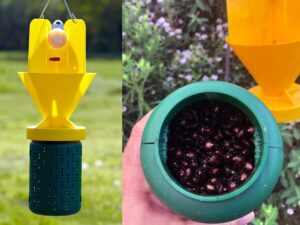
Traps are valuable tools in integrated pest management strategies, aiding in the reduction of beetle populations and protecting plants from severe damage. These traps exploit the beetles’ natural attraction to certain scents and use visual cues to lure them away from targeted vegetation. Typically, traps consist of a container with a lure or bait that emits floral or pheromonal scents mimicking the beetles’ preferred feeding and mating environments.
The lure, often a combination of floral scent and a substance that imitates a female beetle’s sex pheromones, attracts the adult beetles to the trap. Once lured, the beetles enter the container and are unable to escape, ultimately leading to their demise. While effective in reducing local beetle populations, it’s essential to strategically place traps to avoid inadvertently attracting more beetles to the area.
When using traps, consider placing them on the outskirts of your garden rather than in the midst of plants you want to protect. This helps draw beetles away from valuable vegetation. Traps are most effective when used as part of a comprehensive pest management plan that may include other control methods such as insecticides, natural predators, and preventive measures to safeguard your plants what kills Japanese beetles instantly damage.
Timing and Seasonal Considerations
Timing and seasonal considerations play a crucial role in effectively minimizing their impact on plants. To apply control measures at the most advantageous times, it is essential to comprehend the life cycle of these pests:
- Early Summer Emergence: Typically, they emerge in early summer, usually around June. This is when adult beetles become active, feeding on a wide range of plants. Implement preventive measures and monitoring during this period to catch the beetles early.
- Peak Feeding Period: The peak feeding period for occurs during the summer months, extending into July and August. During this time, beetles are most voracious, causing significant damage to leaves, flowers, and fruits. Consider deploying traps, applying insecticides, or employing other control methods to reduce their population during this period.
- Egg-Laying Stage: Adult females lay eggs in the soil, giving rise to the larval stage (grubs). This typically happens in mid to late summer.Focus on soil treatments or introducing natural predators to target the developing grubs during this stage.
- Late Summer and Early Fall: Late summer to early fall is a critical time for kill Japanese beetles grubs in the soil. Applying beneficial nematodes or milky spore disease during this period is effective. Consider aerating the soil to disrupt grub habitats and discourage egg-laying.
- Winter and Spring: Larvae (grubs) overwinter in the soil. Spring is a less active period for adult beetles. Use this time to plan and implement preventive measures for the upcoming summer, such as selecting resistant plants and implementing cultural practices.
By aligning control measures with the specific stages of the life cycle, you can maximize the effectiveness of interventions while minimizing the impact on non-target organisms and the environment. Timely action and a seasonal approach contribute to a more sustainable and integrated pest management strategy.
Neem Oil and Other Natural Repellents
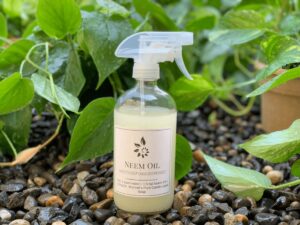
Neem oil is made from the seeds of the neem tree (Azadirachta indica) and serves as a powerful natural insecticide and repellent. It disrupts the feeding and reproductive cycles, acting as a deterrent while minimizing harm to beneficial insects.
Apart from neem oil, several other natural repellents can be employed in the battle against Japanese beetles:
1. Garlic and Onion Spray:
- Garlic and onion sprays act as effective repellents. The strong odor discourages from feeding on plants.
- Create a homemade spray by blending garlic or onions with water and spraying it on affected plants.
2. Pyrethrin-Based Sprays:
- Pyrethrin, derived from chrysanthemum flowers, is a natural insecticide effective against Japanese beetles.
- Use pyrethrin-based sprays for direct contact with adult beetles, providing a natural and quick solution.
3. Diatomaceous Earth:
- Diatomaceous earth, composed of fossilized diatoms, is an abrasive powder that damages the exoskeleton and kills Japanese beetles, causing dehydration and kill red ants.
- Dust affected plants with diatomaceous earth to create a barrier against beetles.
4. Kaolin Clay (Surround):
- Kaolin clay forms a protective film on plant surfaces, making them less attractive.
- Apply a solution of kaolin clay and water to plants to discourage feeding.
Utilizing these natural repellents contributes to a holistic and environmentally friendly approach to control. Integrate these methods into a broader pest management plan, incorporating practices such as companion planting and encouraging natural predators to create a sustainable balance in your garden or landscape, and read about How to Grow Lemongrass.
Conclusion:
Managing requires a multi-faceted approach that takes into account the insect’s life cycle, seasonal variations, and the specific needs of your plants. By understanding the signs of damage and identifying these pests promptly, you can implement effective control measures to protect your garden or crops.
Organic control methods, such as neem oil, beneficial nematodes, and companion planting, provide environmentally friendly options to mitigate kills Japanese beetles infestations. These techniques not only take care of the beetles but also improve the resilience and general health of the ecology in your garden.
For those seeking a more aggressive approach, chemical control options can be employed. Insecticidal sprays, systemic treatments, and contact insecticides offer targeted solutions, but it’s crucial to use them judiciously and in accordance with product labels to minimize environmental impact.
Timely action during key stages of the best thing to kill Japanese beetles life cycle, from early summer emergence to late summer and early fall treatments, is essential. Natural repellents like neem oil, garlic spray, and diatomaceous earth, along with cultural practices, add layers to a comprehensive pest management strategy.
In the quest to protect your plants from what kills Japanese beetles instantly, a well-informed and integrated approach ensures not only immediate control but also the long-term health and vitality of your garden or agricultural endeavors.
FAQ:
Q1. How do I kill Japanese beetle grubs?
A: Killing grubs can be achieved through various methods. Applying beneficial nematodes to the soil is an effective biological control. Alternatively, using milky spore disease or certain chemical insecticides labeled for grub control can also be successful.
Q2. What methods can I use to kill Japanese beetle larvae?
A: Killing the larvae involves utilizing targeted treatments. Applying nematodes or insecticides specifically designed for grub control to affected areas of the lawn or garden is a common approach. Timing is crucial, usually in late summer or early fall.
Q3. How can I kill Japanese beetles naturally?
A: Natural methods for controlling Japanese beetles include using neem oil, garlic or onion sprays, and diatomaceous earth. These natural repellents disrupt the beetles’ feeding and reproductive cycles, offering an eco-friendly solution to reduce their impact on plants.
Q4. What are some natural ways to get rid of Japanese beetles?
A: To naturally get rid of, consider using neem oil, planting beetle-resistant plants, and encouraging natural predators like birds and beneficial insects. Employing physical barriers like row covers and practicing good garden hygiene can also deter beetles.





